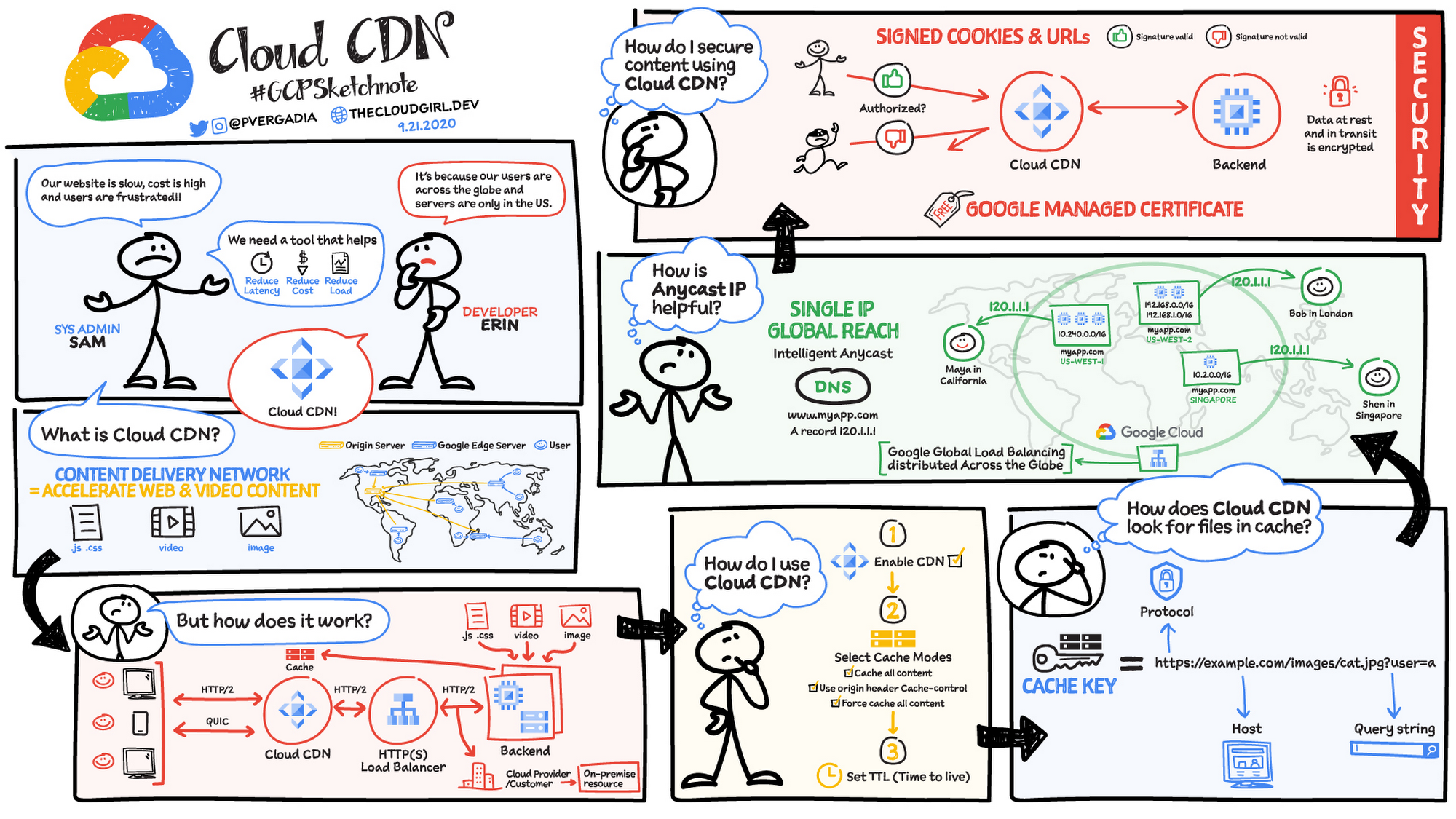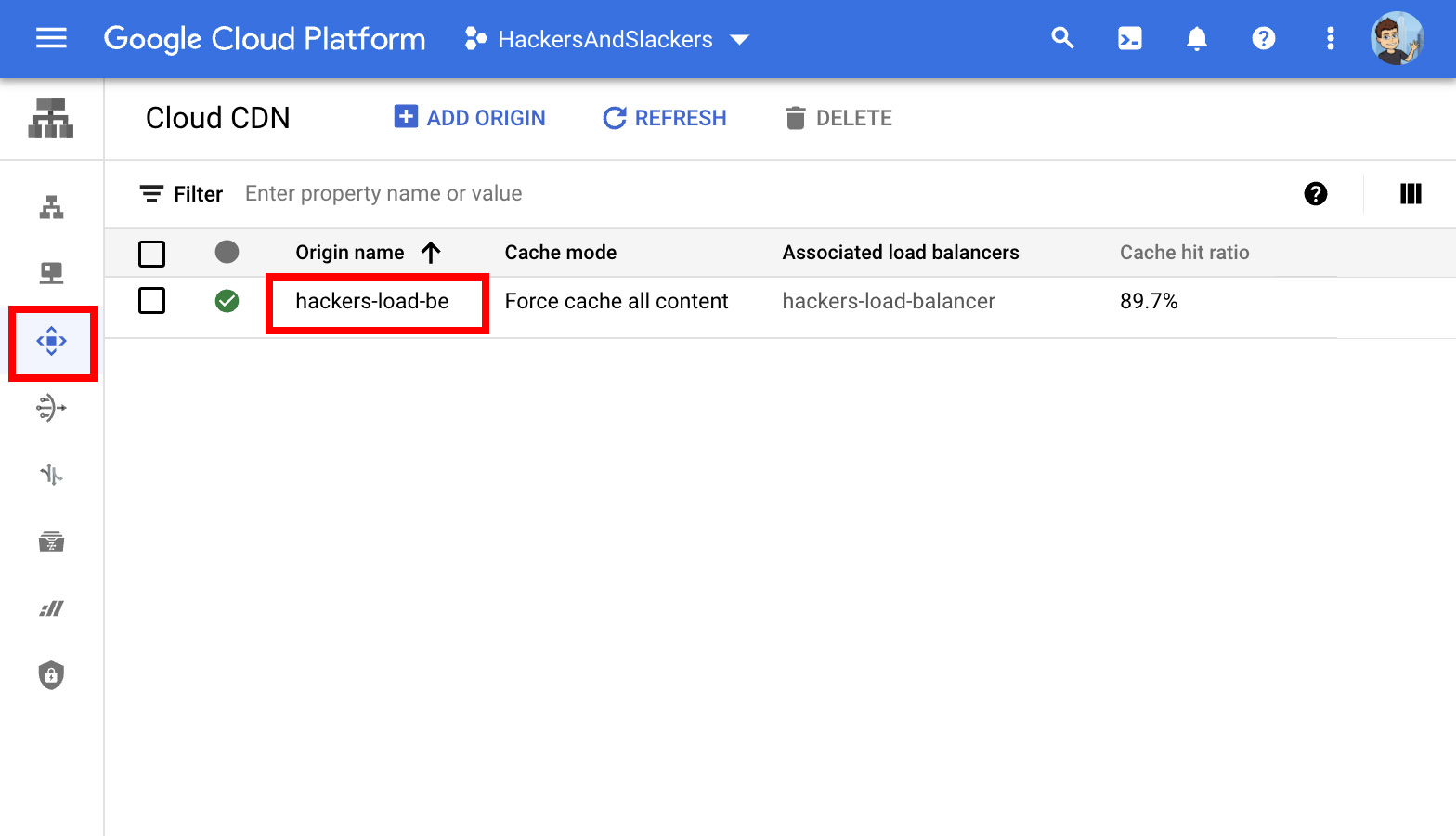Leveraging Google Cloud CDN for Faster, Safer Web Applications

Introduction
Google Cloud CDN (Content Delivery Network) is a global network of edge servers that cache and deliver static and dynamic web content to users worldwide. By utilizing Google Cloud CDN, businesses can significantly improve the performance, security, and reliability of their web applications.
Improved Performance

- Reduced Latency: CDN servers are strategically placed closer to users, minimizing the distance data needs to travel, resulting in reduced latency and faster page load times.
- Increased Bandwidth: CDN servers have high-capacity networks that can accommodate large volumes of traffic, ensuring smooth and uninterrupted user experiences.
- Intelligent Caching: The CDN automatically caches frequently accessed content on edge servers, eliminating the need for users to download the same content repeatedly, further reducing load times.
Enhanced Security

- DDoS Protection: CDN services provide built-in DDoS (Distributed Denial of Service) protection, mitigating malicious traffic and safeguarding web applications from disruptions.
- HTTPS Offloading: CDN servers support HTTPS offloading, which reduces the load on origin servers and improves website security by encrypting user data before delivery.
- Origin Authorization: CDN services allow origin servers to authorize CDN requests, ensuring that only authorized clients can access protected content.
Increased Reliability
- Redundant Architecture: The CDN infrastructure is highly redundant, ensuring that users can access content even if one or multiple servers fail.
- Global Reach: Google Cloud CDN operates a vast network of edge servers in over 200 locations worldwide, providing coverage for over 95% of users.
- Uptime Guarantee: CDN services offer high uptime guarantees, ensuring consistent availability of web content to users.
Other Benefits
- Reduced Costs: CDN services can reduce bandwidth costs by caching content on edge servers, eliminating the need for expensive origin server capacity.
- Improved User Experience: Faster loading times and reduced latency enhance user engagement and satisfaction.
- Increased SEO Rankings: Search engines favor websites that load quickly and provide a seamless user experience, which can boost search rankings.
How to Implement Google Cloud CDN
Implementing Google Cloud CDN is a straightforward process:
- Enable the CDN API: Enable the Google Cloud CDN API in your Google Cloud console.
- Create a CDN Instance: Provision a CDN instance and configure the origin servers and edge locations.
- Set Up Edge Caches: Define the caching policies for static and dynamic content on edge servers.
- Configure HTTPS Offloading: Enable HTTPS offloading to improve security and performance.
- Monitor and Optimize: Monitor CDN performance and adjust configurations as needed to ensure optimal results.
Conclusion
Google Cloud CDN is an essential tool for businesses looking to enhance the performance, security, and reliability of their web applications. By leveraging the global network of edge servers and advanced caching capabilities, organizations can provide a seamless and secure user experience while reducing costs and improving SEO rankings.## Leveraging Google Cloud CDN for Faster, Safer Web Applications
Executive Summary
Google Cloud CDN (Content Delivery Network) is a powerful tool that can significantly improve the performance, security, and reliability of web applications. By caching static content and delivering it from edge locations closer to users, Google Cloud CDN reduces latency, improves page load times, and enhances the overall user experience. This article delves into the benefits and features of Google Cloud CDN, providing a comprehensive guide to its implementation and optimization.
Introduction
In today’s fast-paced digital environment, website speed and reliability are paramount for user satisfaction and business success. Google Cloud CDN addresses these challenges by offering a global network of edge servers that deliver content to users from the closest possible location. This results in faster page load times, improved user engagement, and increased conversions.
FAQs
Q: What is Google Cloud CDN?
A: Google Cloud CDN is a global network of edge locations that cache and deliver static content, such as images, videos, and CSS files, to users from the closest location, improving website performance and user experience.
Q: What are the benefits of using Google Cloud CDN?
A: Benefits of using Google Cloud CDN include faster page load times, reduced latency, improved SEO rankings, increased website security, and reduced bandwidth costs.
Q: How do I implement Google Cloud CDN?
A: Implementing Google Cloud CDN involves creating a CDN profile, adding origin servers, and configuring cache settings. This process is typically integrated with your web server configuration and can be done through the Google Cloud console or via the Cloud CDN API.
Subtopics
1. Improved Website Performance
Google Cloud CDN significantly improves website performance by reducing latency and page load times. It caches static content at edge locations, allowing users to access content from the closest server, reducing round-trip time and providing a faster user experience.
- Reduced Latency: Content delivered from edge locations is significantly faster than from origin servers, reducing latency and improving user responsiveness.
- Faster Page Load Times: By caching frequently accessed files, Google Cloud CDN accelerates page load times, making websites more engaging and user-friendly.
- Optimized User Experience: Improved performance leads to enhanced user satisfaction, increased conversions, and better SEO rankings.
2. Enhanced Security
Google Cloud CDN provides robust security features to protect web applications from malicious attacks and data breaches. It offers DDoS protection, SSL/TLS encryption, and access control to ensure the integrity and confidentiality of your content.
- DDoS Protection: Google Cloud CDN’s global network mitigates DDoS attacks by distributing traffic and absorbing malicious requests, protecting websites from downtime and service disruptions.
- SSL/TLS Encryption: CDN encrypts data in transit using SSL/TLS protocols, preventing unauthorized access and maintaining data security.
- Access Control: CDN allows you to configure access controls to restrict content access to authorized users, preventing unauthorized downloads and content theft.
3. Increased Reliability
Google Cloud CDN ensures high availability and reliability by leveraging a global network of redundant edge servers. It monitors and automatically fails over to alternative servers in case of outages, ensuring continuous content delivery.
- Global Network: CDN’s global network of edge locations provides multiple points of presence, reducing the risk of service disruptions.
- Redundant Servers: Edge servers are geographically dispersed to minimize the impact of hardware failures and maintain high availability.
- Automatic Failover:CDN seamlessly switches to backup servers during outages, ensuring uninterrupted content delivery.
4. Scalability and Flexibility
Google Cloud CDN is highly scalable and flexible, adapting to changing traffic patterns and demand. It can automatically increase capacity during peak traffic periods and reduce resources during off-peak hours, optimizing performance and reducing costs.
- Automatic Scaling: CDN automatically adjusts its capacity based on traffic demand, ensuring optimal performance and preventing bottlenecks.
- Customizable Cache Policies: You can configure specific cache policies for different content types, allowing fine-tuned optimization for varying cache durations and behaviors.
- Edge Caching Rules: CDN allows you to define custom caching rules to control how specific content is cached and delivered, providing granular control over cache behavior.
5. Cost Optimization
Google Cloud CDN can significantly reduce bandwidth costs by caching frequently accessed content and offloading traffic from origin servers. It offers flexible pricing options and usage-based billing, allowing you to optimize costs based on your specific needs.
- Reduced Bandwidth Costs: CDN reduces bandwidth consumption by caching content locally, reducing the load on your origin servers and lowering data transfer costs.
- Usage-Based Pricing: CDN billing is based on usage, giving you flexibility and control over your expenses.
- Cost Optimization Tools: CDN provides tools to monitor and optimize cache usage, enabling you to identify potential cost savings and improve efficiency.
Conclusion
Google Cloud CDN is an indispensable tool for businesses seeking to improve the performance, security, and reliability of their web applications. By leveraging its global network of edge servers, Google Cloud CDN delivers content faster, protects against threats, ensures uninterrupted availability, and optimizes costs. Its scalability, flexibility, and cost-effectiveness make it an ideal solution for websites of all sizes. By embracing the power of Google Cloud CDN, businesses can enhance user experience, drive growth, and gain a competitive advantage in the digital landscape.
Keyword Tags
- Google Cloud CDN
- Content Delivery Network
- Website Performance
- Website Security
- Cost Optimization
